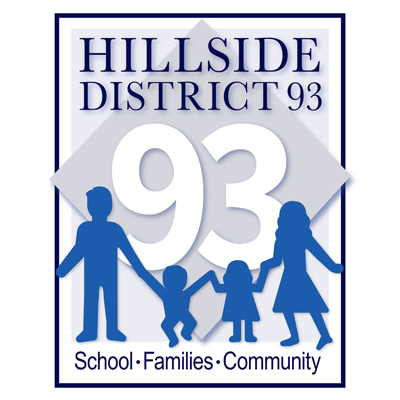SPECIAL EDUCATION: PARENT INFORMATION REGARDING PLACEMENT
Placement In Special Education: The decision about where the student should receive services is called educational placement. The IEP team, determines the educational placement and services for the student. This is called “placement.” Decisions are made at least once a year at the IEP meeting and are based on the student’s individual needs. The IEP team presumes that the first placement option considered for each child with a disability is the general education classroom in the school that the child would attend if he/she did not have a disability. The team must also consider what extra supports the student needs that will allow the child to be successful in his or her educational placement.
While the vast majority of our students receive services at Hillside School, if a student's needs cannot be met with support at Hillside School the educational team will determine an appropriate, least restrictive service delivery option that best addresses his/her current needs. If students have sufficient need for a self-contained and intensive setting, specialized classrooms are available in specific buildings across the district. District 93 is currently a participating member of the Proviso Area for Exceptional Children (PAEC), as well, that provides services for children with low-incidence disabilities. This membership agreement ensures the provision of a continuum of services for students with hearing, vision, and physical disabilities.
If the IEP team decides that a general education class on a full-time basis is not the most appropriate setting for the student, then they can consider other options like resource rooms, special classes, special schools, or home/hospital instruction. Free appropriate public education (FAPE) includes three general areas: general education, nonacademic activities and extracurricular activities.
10 Basics of the Special Education Process
General Education: The student receives specially designed instruction with supplementary aids and services in the general education classroom. This could include, but not be limited to, modifications to the regular curriculum, co-teaching (general education teacher and special education teacher team teaching in the same classroom), special education training for the general education teacher, computer assisted devices, physical arrangements of the classroom, peer supports, related services provided in the general education setting, grading modifications, and/or additional adult assistance.
Resource: The student receives specially designed instruction through a special education class for less than half of the school day. The student is included, to the maximum extent appropriate, in general education classes.
Self-contained Setting: The student receives specially designed instruction through a special education class for the majority of the school day. The student is included, with support (using some of the above methods) in those parts of general education classes when appropriate.
Separate Day School (Special Day School): The student receives specially designed instruction in a special school.
CHILD FIND/ELIGIBILITY/EVALUATION
Students are identified for special education through a child find process as required by federal and state guidelines. For students who are 3-5 years old, developmental screening and services are available through the Preschool Program.
D93 has a legal obligation to actively seek out and identify all students in the District who have disabilities that significantly impact academic achievement and/or functional performance. When a concern is expressed either by school staff, student, or a parent, the student’s academic and social/emotional status is reviewed through a problem-solving process. Teachers and support staff, along with the student and parent input, may develop and implement interventions and strategies to address needs. When interventions/strategies adequately meet the needs of a student, no further action is necessary.
When strategies and intervention plans are not successful in appropriately supporting a student, an individual assessment, referred to as a case study evaluation, is initiated to determine eligibility for special education services.
A case study evaluation is conducted with written parent/guardian consent and includes a series of assessments and data collection procedures that provide information about the student and the nature of the difficulties that affect educational success. The educational team, including the parents, decides what assessments and data are needed in order to complete a comprehensive review. Assessments may include, but not be limited to, psychological, achievement, adaptive behavior, speech and language, occupational/physical therapy, vision and hearing screenings, health history and a social developmental study. The assessment must be completed within 60 school days from the date of written parental consent. When the case study evaluation is completed, results are shared and eligibility for special education services is determined by the educational team.
Any private evaluations, voluntarily provided by parents, are considered by the educational team and are compared to the district’s special education evaluative results. Within 14 days of receiving a private evaluation or other request for assessment, the educational team determines whether additional assessment or other steps are warranted.
To receive special education services, students must be determined to have one of the following exceptionalities as defined by the Illinois State Board of Education (https://www.isbe.net/specialeducation) and have an adverse educational impact from the disability. The disabilities identified by the State Board are as follows:
Autism (includes, but is not limited to, any Autism Spectrum Disorder)
Deaf-blindness
Deafness
Emotional disability
Hearing impairment
Intellectual disability
Multiple disabilities
Orthopedic impairment
Other health impairment
Specific learning disability
Speech or language impairment
Traumatic brain injury
Visual impairment
If the student is determined to be eligible for special education support, an Individualized Education Plan (IEP) is developed and reviewed annually. Eligibility for special education services is reevaluated every three years.
Notice of Procedural Safeguards for Parents/Guardians of Students with Disabilities must be shared with parents if a case study evaluation is initiated and thereafter provided annually to families if their child receives special education services.
